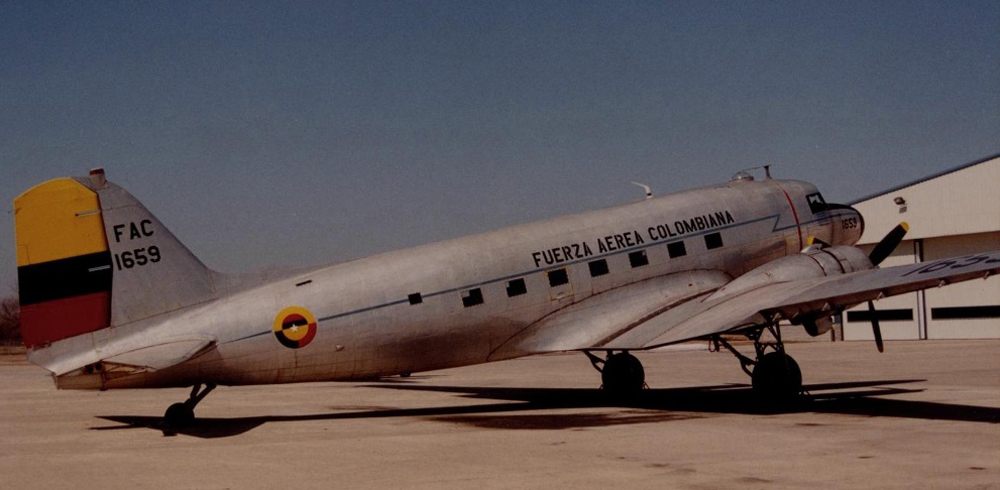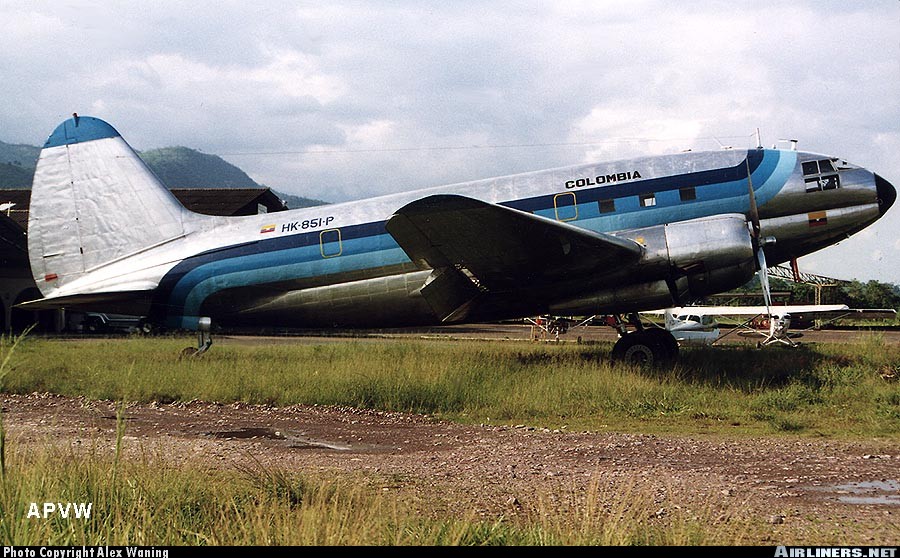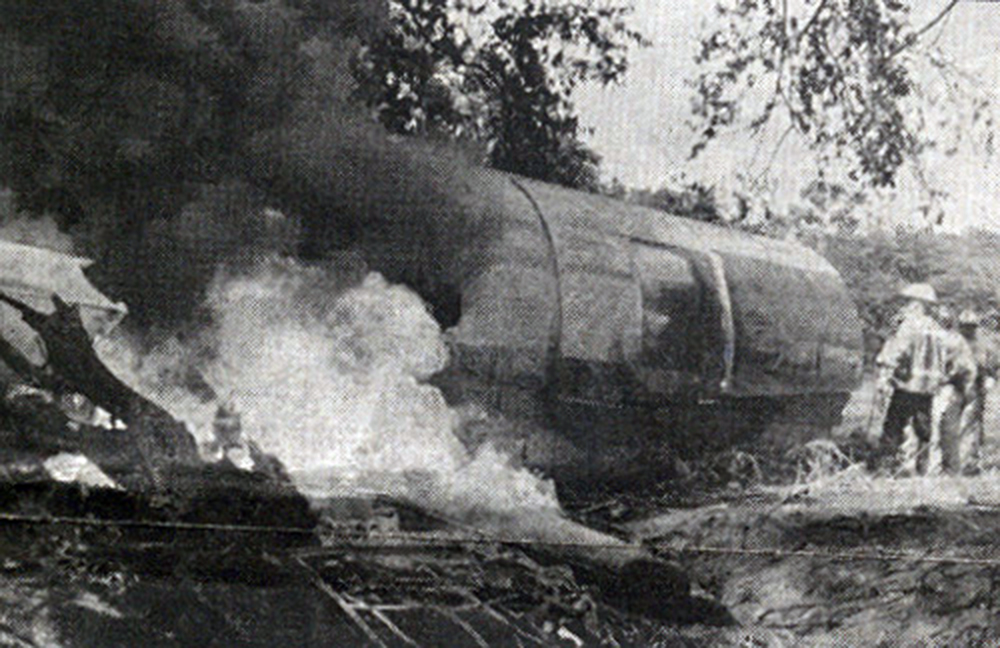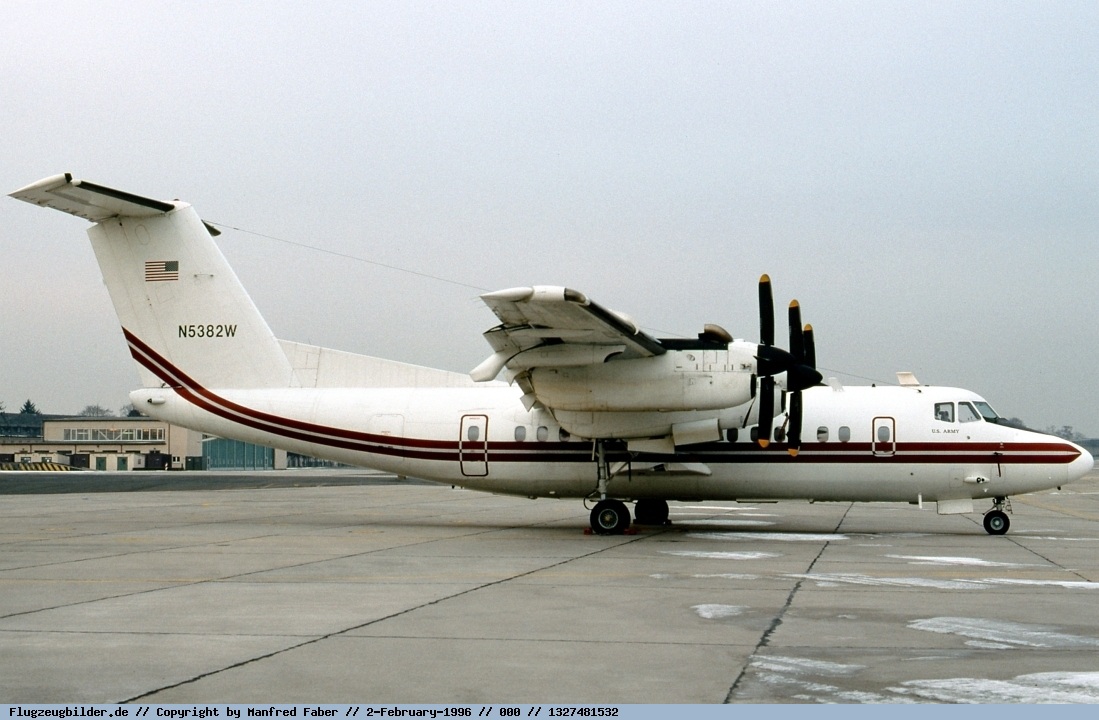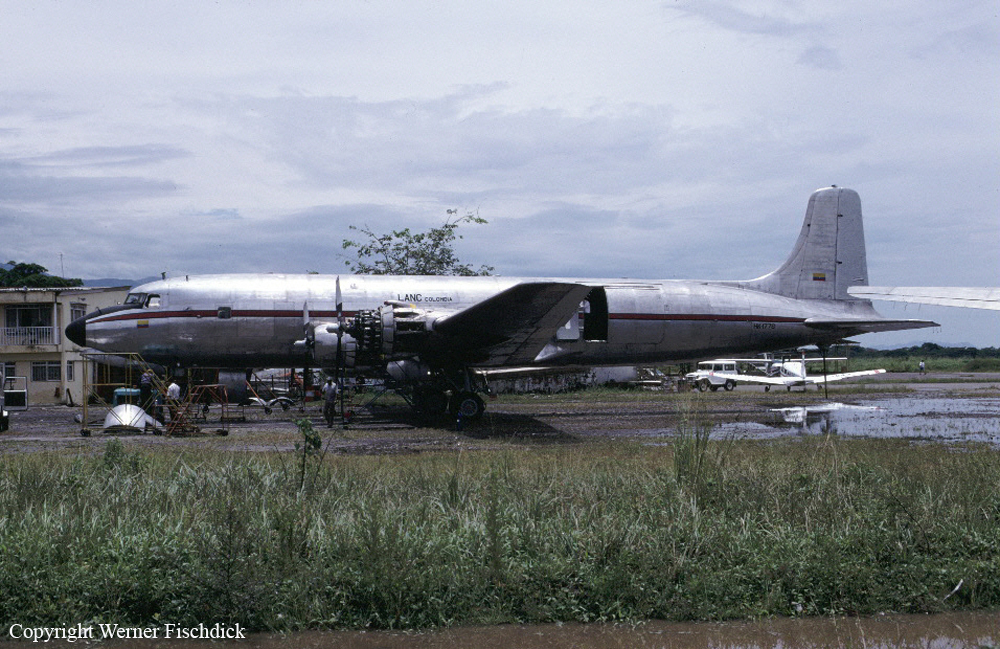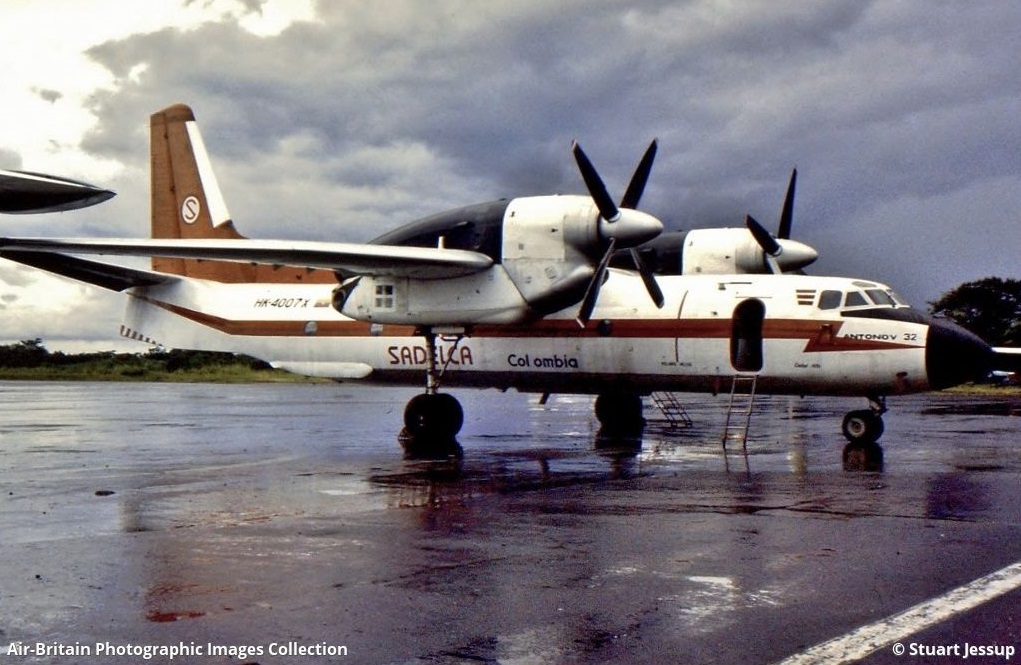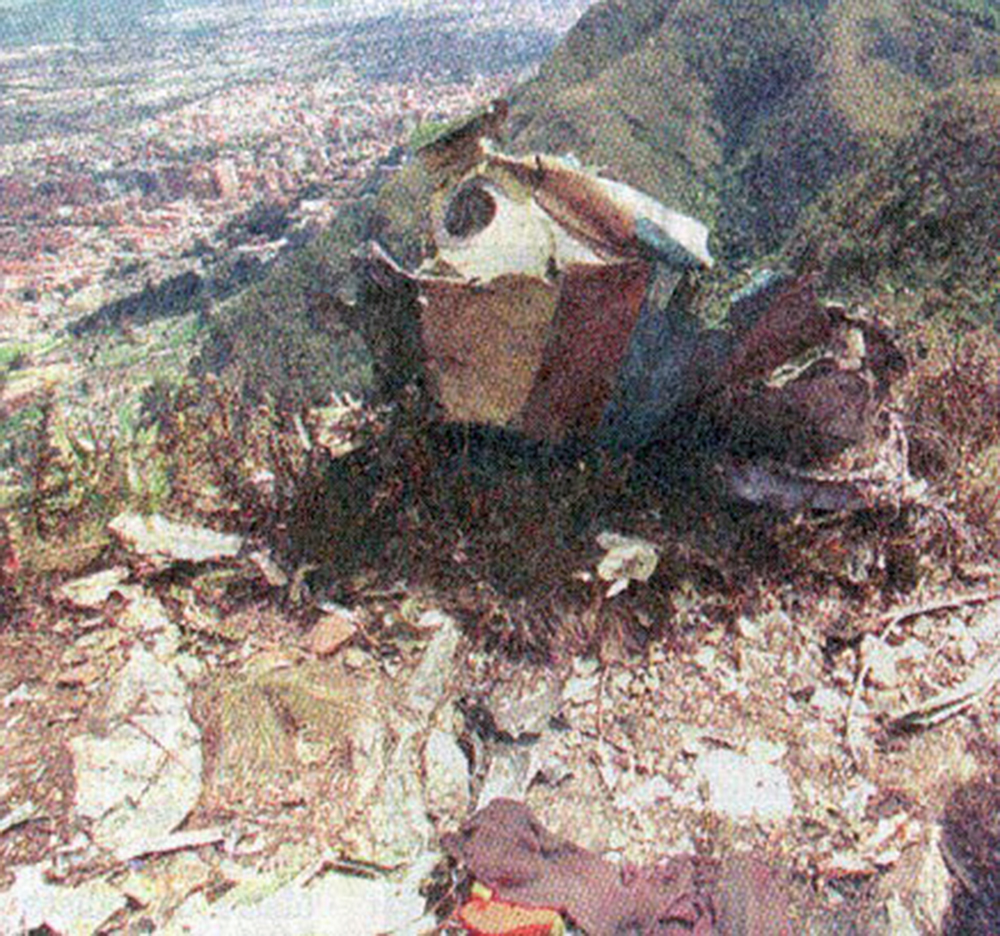Crash of a Basler BT-67 near Pueblo Rico: 7 killed
Date & Time:
Sep 2, 2000
Registration:
FAC-1659
Survivors:
No
Schedule:
Apiay - Pereira
MSN:
16236/32984
YOM:
1945
Crew on board:
7
Crew fatalities:
Pax on board:
0
Pax fatalities:
Other fatalities:
Total fatalities:
7
Circumstances:
The crew departed Apiay AFB on a flight to Pereira, carrying seven crew members who were taking part to a supply mission to ground troops fighting FARC soldiers who attacked communications relays. While cruising at an altitude of 11,200 feet in poor weather conditions, the aircraft struck the slope of Mt Montezuma located about 5 km northwest of Pueblo Rico. All seven occupants were killed.
Probable cause:
Controlled flight into terrain.
